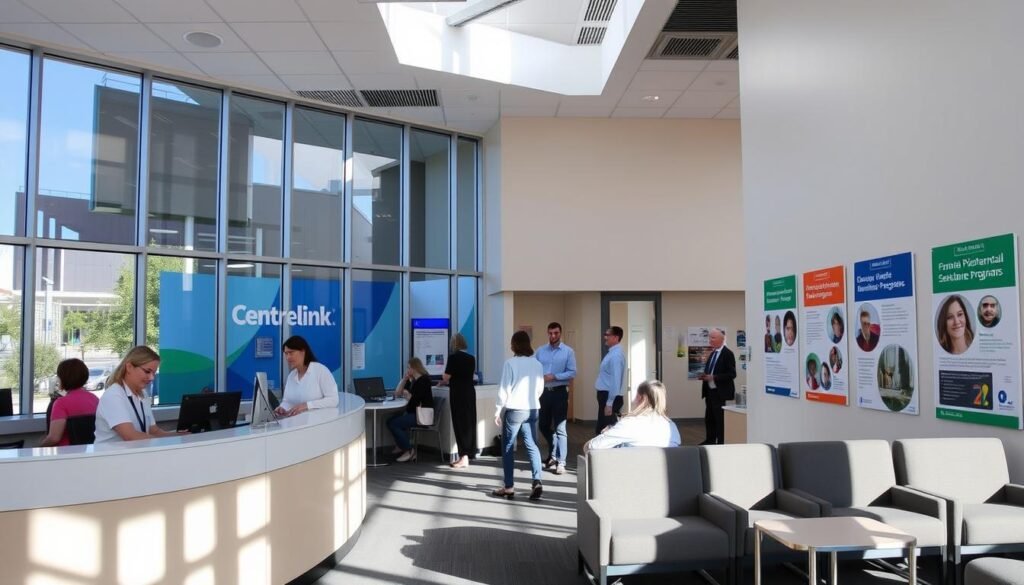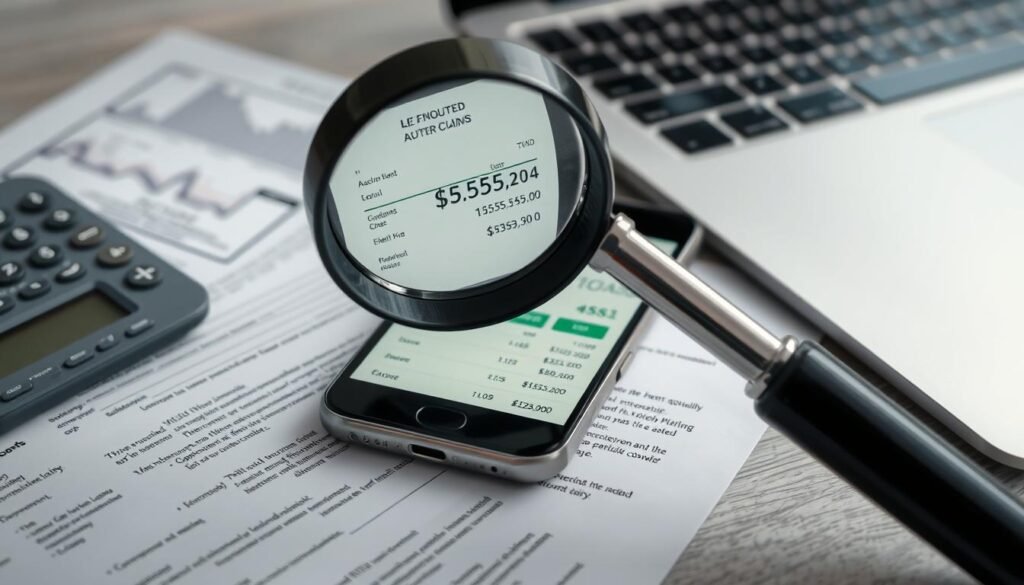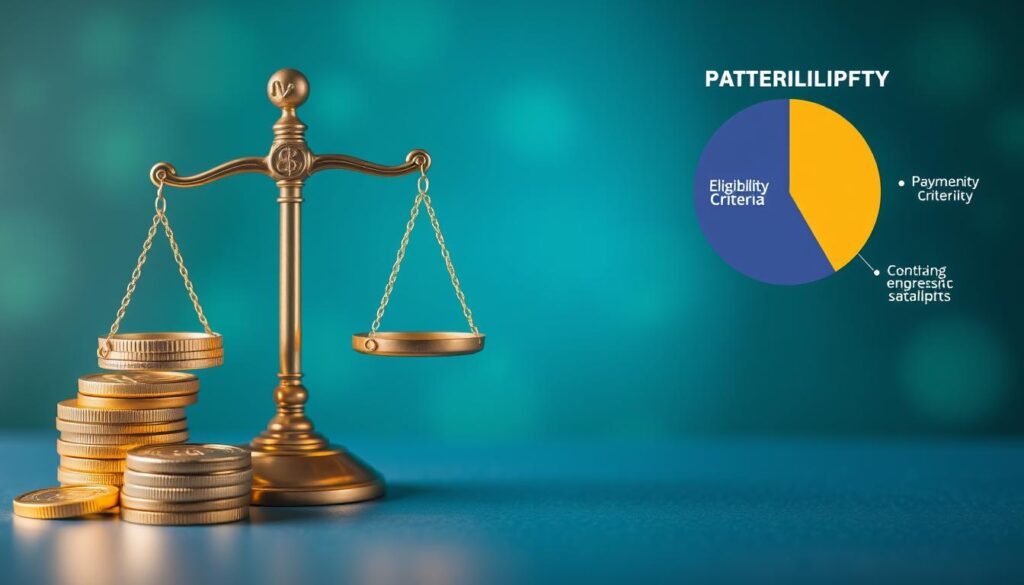Australians are being urged to exercise extreme caution as reports of a potential $2,100 Centrelink payment have surfaced online. Surprisingly, these claims do not originate from official government sources, but rather from seemingly Indian-based websites promising “life-changing benefits” to low-income Aussies, Centrelink recipients, and seniors. Services Australia has firmly refuted the existence of such a payment, emphasising that it is a scam designed to steal personal information or money.
The National Anti-Scam Centre has warned that scammers often impersonate trusted organisations, like Centrelink, to exploit vulnerable members of the community. These fraudulent schemes can have a significant impact, particularly on seniors and those relying on government support for their financial security.
Major Highlights
- Australians are being warned about false claims of a $2,100 Centrelink payment circulating online.
- These claims originate from seemingly Indian-based websites and promise “life-changing benefits” to low-income Aussies, Centrelink recipients, and seniors.
- Services Australia has confirmed these payments do not exist and urges caution, as scammers often impersonate trusted organisations like Centrelink.
- Seniors and those relying on government support should be vigilant and verify any payment information with official sources.
- Reporting suspicious claims to the National Anti-Scam Centre can help protect the community from financial fraud.
The Recent Centrelink Payment Scam Alert
In the midst of the ongoing cost of living crisis, Aussies have been bombarded with a wave of scam alerts related to Centrelink payments. These fraudulent claims have emerged from unofficial websites and social media accounts, promising various income supplement amounts such as $750, $1,490, $1,800, and even $2,100.
Origins of the False Payment Claims
Scammers have been taking advantage of the public’s heightened awareness of financial assistance during these challenging times. They have created fake websites and social media profiles that mimic official Centrelink communications, aiming to deceive vulnerable Australians into sharing their personal information.
Identifying Suspicious Payment Promises
- Claims of “one-off payments” or “Centrelink cash relief payments”
- Offers of “bonus payments” to help with the cost of living crisis
- Requests to check your eligibility or provide personal details through links or forms
Common Red Flags in Scam Messages
- Urgent or threatening language, such as threats of penalties or account suspension
- Unsolicited contact via text, email, or social media, claiming to be from Centrelink or other government agencies
- Demands for immediate action, like making a payment or providing sensitive information
Australians must remain vigilant in the face of these scam alerts and financial fraud attempts. By understanding the tactics used by scammers, we can better protect ourselves and our loved ones from falling victim to these deceptive schemes.
“Scammers have been targeting older Aussies with false claims of receiving additional payments, such as $750 and $1,800.”
| Scam Type | Losses Reported in 2023 |
|---|---|
| Investment Scams | Highest Losses |
| Romance Scams | Second Highest Losses |
| Phishing Scams | Third Highest Losses |
Major Warning Over $2100 Centrelink Payment: What You Need to Know
Aussies, listen up! There’s a major scam alert you need to be aware of. Reports have surfaced about fraudulent websites and social media accounts claiming that a $2100 Centrelink payment is available. However, Services Australia strongly emphasizes that this payment does not exist.
It’s crucial to be vigilant and only trust information from official government channels. Legitimate Centrelink updates are communicated through websites ending in ‘.gov.au’, such as servicesaustralia.gov.au and my.gov.au. Any websites or social media accounts claiming to offer a $2100 payment are likely scams, often originating from Indian domains like ‘.in’.
Don’t fall for these false promises! Scammers use various tactics to trick you, like sending unsolicited messages with links or making threatening phone calls. Remember, the government will never ask for your personal information through text or email.
If you come across any suspicious claims about Centrelink payments, don’t click on the links or provide your details. Instead, verify the information through official channels by contacting Services Australia directly. Protecting yourself from these scams is crucial to safeguard your government benefits and financial support.
“Legitimate Centrelink updates are communicated through official channels only. Be wary of any unsolicited messages or websites claiming to offer payments that don’t exist.”
Remember, if you’ve been the victim of a scam, act quickly by contacting your bank or card provider to stop any transactions. By staying informed and vigilant, you can avoid falling prey to these fraudulent schemes and protect your hard-earned government assistance.
How Scammers Target Vulnerable Australians Through False Promises
In the digital age, online scams have become a growing concern for Aussies. Cybercriminals are employing sophisticated tactics to prey on vulnerable individuals, including the elderly and those facing financial hardship. One alarming trend is the rise of fraudulent websites that mimic official government pages, offering false promises of Centrelink payments and other financial assistance.
Tactics Used by Fraudulent Websites
Scammers often create websites that closely resemble the official Centrelink or myGov portals, complete with logos and branding. These sites may claim to offer a “one-off payment” or a “special Centrelink bonus” in an attempt to lure unsuspecting users into sharing their personal and financial information. Once obtained, this data can be used for identity theft and financial fraud.
Social Media Manipulation Techniques
- Scammers are also leveraging social media platforms to spread misinformation and manipulate vulnerable Australians. They may create fake accounts or impersonate government agencies, posting enticing offers and promises of financial assistance.
- These social media tactics often involve using fear tactics, such as threats of arrest or deportation, to coerce victims into providing sensitive information or making payments.
- It’s crucial to remember that legitimate government organizations, including Centrelink, will never contact you via text message or email with links to log onto online services.
Protecting oneself from these online scams requires vigilance and a critical eye. Verifying the authenticity of any website or communication before sharing personal details is essential in safeguarding against identity theft and financial fraud.
“PayID scams” are the most searched for scam in Australia, with an average of 21,500 monthly searches, and the maximum search volume was in January 2023, with 26,567 searches.
By being aware of the tactics used by scammers and staying informed about legitimate government communication channels, Australians can take proactive steps to protect themselves from the growing threat of online scams.
Legitimate Centrelink Payment Updates and Changes
While the rumored $2100 Centrelink payment is a scam, the Australian government has indeed made legitimate updates to welfare benefits and payment rates. As of September 20, 2024, the maximum fortnightly rate of the Age Pension increased by $28.10 for singles and $42.40 for couples combined. Similar increases were also applied to other government assistance programs, such as the Disability Support Pension and Carer Payment.
These adjustments aim to help recipients manage the rising cost of living, ensuring that welfare benefits keep pace with inflation. The payment rates are reviewed regularly, and eligible Aussies are encouraged to check the eligibility criteria for various government assistance programs.
| Payment Type | Fortnightly Increase |
|---|---|
| Age Pension (Single) | $28.10 |
| Age Pension (Couple) | $42.40 |
| Disability Support Pension | $25.30 |
| Carer Payment | $21.50 |
These changes demonstrate the Australian Government’s commitment to supporting the financial wellbeing of its citizens, particularly the most vulnerable. Seniors and other Centrelink recipients are encouraged to stay informed about legitimate payment updates and eligibility criteria to ensure they’re accessing the full range of welfare benefits available to them.

Recognising Official Government Communications
In the digital age, it’s crucial for Aussies to be able to distinguish genuine government communications from fraudulent scams. Identifying authentic government websites and official communication channels is the first step in safeguarding against online security threats and maintaining digital literacy.
Authentic Government Website Identifiers
One reliable indicator of an official government website is the domain name. All legitimate Australian government websites, including those of Services Australia and myGov, end with the ‘.gov.au’ top-level domain. These websites adhere to strict security protocols and use encrypted connections to protect users’ personal information.
Official Communication Channels
- Services Australia communicates important payment updates and changes through their official website at servicesaustralia.gov.au, as well as via myGov accounts and direct mail correspondence.
- The government agency never requests sensitive details like bank account numbers or passwords through unsolicited emails, text messages, or social media posts.
- Australians should be wary of any communication that claims to be from Centrelink or myGov but does not originate from these official digital platforms or channels.
By familiarising themselves with the hallmarks of authentic government websites and communication methods, Aussies can navigate the digital landscape with confidence and safeguard their online security and digital literacy.
Services Australia’s Response to False Payment Claims
In response to the recent proliferation of false claims about a $2100 Centrelink payment, Services Australia has issued a strong warning to the public. The government agency emphasizes that these payment promises do not exist and are part of a scam, urging Australians to disregard any information suggesting otherwise.
Services Australia is taking a proactive stance to raise public awareness and prevent scam prevention. The agency advises Australians to check the official statements on their website for accurate information on legitimate Centrelink payments and eligibility criteria. They encourage the public to be vigilant and report any suspicious activities to Scamwatch, the Australian government’s government response to combating scams.
“These $2100 Centrelink payments are not real – they are a scam. We urge all Australians to disregard any claims about these non-existent payments and instead refer to our official website for accurate information on government support.”
By issuing this clear and direct warning, Services Australia is taking a strong stance to protect vulnerable members of the community from falling victim to these fraudulent payment claims. The agency’s emphasis on public awareness and scam prevention is a crucial government response to safeguarding the integrity of its official statements and ensuring Australians can access legitimate government support.
Recent Improvements in Centrelink Claims Processing
Services Australia has made significant strides in enhancing Centrelink’s claim processing and customer service. These advancements have resulted in faster turnaround times and improved efficiency for those seeking government assistance.
Current Processing Timeframes
The agency has reported notable reductions in the time it takes to process various Centrelink claims. Age Pension applications are now processed within 49 days, down from the previous 84-day timeframe. JobSeeker claims are settled in just 6 days, a significant improvement from the earlier 27-day average. Additionally, Paid Parental Leave claims are now processed in a mere 3 days, compared to the previous 31-day wait.
Enhanced Customer Service Measures
Alongside the streamlined claim processing, Centrelink has also made strides in enhancing its customer service. Average call wait times have decreased by 7.5 minutes, now standing at 21 minutes on average. These improvements can be attributed to the addition of 3,000 extra staff to bolster Centrelink’s service capabilities.
These recent developments underscore Services Australia’s commitment to providing timely and efficient Centrelink services to the Australian public. By prioritizing claim processing and customer support, the agency aims to ensure a more seamless experience for those relying on Centrelink for essential government benefits and assistance.

“The streamlining of Centrelink’s claim processing and customer service has been a game-changer for many Aussies in need of government support. These improvements are a testament to the agency’s dedication to enhancing government efficiency and responsiveness.”
Protecting Yourself from Centrelink-Related Scams
In the face of rising online fraud, it’s crucial for Aussies to stay vigilant and safeguard their personal information when dealing with Centrelink-related matters. By following a few simple steps, you can protect yourself from falling victim to scams and ensure your hard-earned benefits are secured.
First and foremost, stop and think before responding to any unsolicited contact claiming to be from Centrelink or the government. Legitimate agencies will never ask you to provide sensitive details like your bank account or Medicare numbers over the phone or via email. If in doubt, check the information through official channels by visiting the Services Australia website or calling their helpline directly.
Secondly, be wary of phishing attempts that try to lure you into sharing your personal information. Scammers often use fake websites or social media profiles that closely resemble official government portals. Always double-check the URL and look for security indicators like the “https://” prefix before entering any data.
- Never click on links or open attachments from unknown sources, as they could be used to install malware on your device.
- Be cautious of any promises of unrealistic Centrelink payments or benefits – if it seems too good to be true, it likely is.
Finally, if you suspect you’ve been targeted by a scam, report it immediately to your bank, Scamwatch, and the relevant government authorities. By taking proactive steps to protect your online safety, you can help prevent fraud and safeguard your personal information.
“Staying vigilant and verifying information through official channels is the best defense against Centrelink-related scams.”
Remember, the key to staying safe is to stop, check, and protect – don’t let scammers take advantage of your trust. By being informed and proactive, you can enjoy the benefits and support services offered by Centrelink without the risk of fraud.
Real vs Fake: How to Verify Centrelink Payment Information
In the wake of recent scam alerts surrounding false Centrelink payment claims, it’s crucial to learn how to accurately verify payment information from official sources. By taking a few simple steps, you can protect yourself from falling victim to deceptive tactics and ensure you’re accessing legitimate government benefits.
Steps to Verify Payment Authenticity
- Visit the official Services Australia website or log into your myGov account to check your payment details and eligibility.
- Use the Payment and Service Finder tool on the Services Australia website to determine which payments you may be entitled to receive.
- If you have any questions or need personalized assistance, contact Centrelink directly using the official phone numbers listed on the Services Australia website.
- Cross-check any payment information with multiple official sources to confirm its legitimacy before taking any action.
Resources for Fact-Checking
- Services Australia website – Your go-to resource for accurate Centrelink payment information.
- MoneySmart – Provides helpful financial education and guidance, including on government benefits.
- Scamwatch – Stay informed about the latest scam alerts and protect yourself from fraudulent activities.
Remember, verifying payment information from official sources is crucial in the face of increasing scam activity. By staying vigilant and utilizing reliable resources, you can ensure you’re accessing the benefits you’re entitled to and safeguard your financial well-being.

“Fact-checking and information verification are essential in the digital age to protect yourself from scams and access legitimate government services.”
| Scam Type | Average Monthly Searches |
|---|---|
| PayID Scams | 21,500 |
| Linkt Scams | 12,300 |
| PayPal Scams | 7,100 |
| MyGov Scams | 5,500 |
| Facebook Marketplace Scams | 5,300 |
By leveraging official sources and staying vigilant, Aussies can navigate the digital landscape and ensure they’re accessing legitimate Centrelink payments and government services.
Current Legitimate Payment Rates and Eligibility Criteria
The Australian Government, through Services Australia, provides a range of welfare benefits and financial assistance to eligible Aussies. While scammers may promise lucrative Centrelink payments, it’s crucial to understand the legitimate rates and eligibility criteria for these government support programs.
The Age Pension is a key retirement benefit, with the maximum fortnightly rate increased by $28.10 for singles and $42.40 for couples as of September 20, 2024. Eligibility is based on factors like age, income, and assets. Similarly, the Disability Support Pension and Carer Payment have seen comparable adjustments to help support Australians in need.
| Payment Type | Maximum Fortnightly Rate (as of Sep 2024) | Eligibility Criteria |
|---|---|---|
| Age Pension | $1,026.10 (single), $1,543.80 (couple) | Age, income, assets |
| Disability Support Pension | $972.50 (single), $1,464.60 (couple) | Permanent physical, intellectual, or psychiatric condition |
| Carer Payment | $972.50 (single), $1,464.60 (couple) | Providing constant care for a person with a disability or severe medical condition |
It’s important to regularly check the Services Australia website for the most up-to-date Centrelink rates and payment eligibility criteria, as these are subject to periodic adjustments to support the welfare needs of the Australian community.

“Protecting the financial wellbeing of Australians is a top priority. We encourage everyone to verify payment information through official government channels to avoid falling victim to scams.”
– Services Australia spokesperson
Reporting Suspicious Centrelink Payment Claims
Australians should remain vigilant and report any suspicious Centrelink payment claims to the appropriate authorities. Scamwatch, a service provided by the Australian Competition and Consumer Commission (ACCC), is the recommended platform to lodge reports about scams, including those related to fraudulent Centrelink payments.
By reporting suspicious activities to Scamwatch at scamwatch.gov.au, consumers can help protect themselves and others from falling victim to scams that take advantage of vulnerable individuals. If personal information has been compromised, it is also crucial to contact your bank or card provider immediately to report the scam and stop any fraudulent transactions.
In addition to reporting to Scamwatch, Australians are encouraged to notify the digital platforms where they encountered the suspicious Centrelink claims. This assists in the swift removal of scam content and helps prevent further dissemination. Services Australia also urges the public to report any suspicious activities directly to them, as this enables their investigation team to take appropriate action and raise public awareness about emerging scams.
